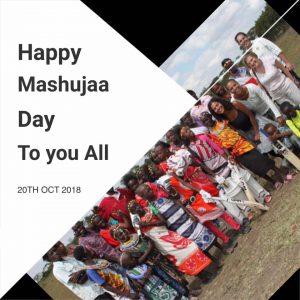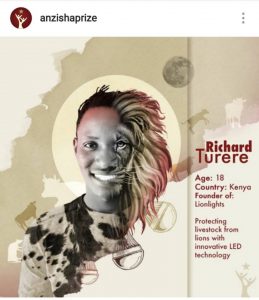Happy Mashujaa Day
 Although its roots date back to 1958 which is the year I was born, it was only about a month ago that I first heard of Mashujaa Day. Were it not for a positive, unintended consequence of a project on which I am working combined with the benefits of modern technology, I would still not have heard of Mashujaa Day.
Although its roots date back to 1958 which is the year I was born, it was only about a month ago that I first heard of Mashujaa Day. Were it not for a positive, unintended consequence of a project on which I am working combined with the benefits of modern technology, I would still not have heard of Mashujaa Day.
As part of the “Physical and Mental Health in a Global Environment Exhibit” which I am co-curating with Jessica Worden-Jones, I needed to secure permission to use photographs of the Maasai Cricket Ladies. Request made. Permission granted. Generally end of relationship. But not in this case.
The unintended consequence was that the relationship did not end with “permission granted.” I remained in contact with Sonyanga Ole Ngais and became Facebook friends with him. Through him, I became friends with Christopher Lesikito Ole Ngais and other Maasai men and women. Because Sonyanga and Christopher can be considered public figures, I am comfortable posting their names. My other Maasai friends are equally valued but will remain anonymous.
 The unexpected consequence of my getting to know members of the Maasai community also benefits my students. In class last week, I used Christopher Lesikito Ole Ngais’ selection as one of the 2018 Anzisha Fellows as an example while teaching a writing concept. Christopher was nominated after he used an “old car battery and some solar panels” to ensure “that local Maasai can preserve their herds and that fewer lions are killed when spotted near pastoral communities.” The Anzisha website includes . During class, students did not just learn about an important writing technique. They gained an insight into a cultural most knew nothing about.
The unexpected consequence of my getting to know members of the Maasai community also benefits my students. In class last week, I used Christopher Lesikito Ole Ngais’ selection as one of the 2018 Anzisha Fellows as an example while teaching a writing concept. Christopher was nominated after he used an “old car battery and some solar panels” to ensure “that local Maasai can preserve their herds and that fewer lions are killed when spotted near pastoral communities.” The Anzisha website includes . During class, students did not just learn about an important writing technique. They gained an insight into a cultural most knew nothing about.
Three months ago, if a student asked “Don’t the Maasai drink cow blood?” I could have said little more than “yes” while using the Mongols as an example of why people drink animal blood. Last week, in response to this question, I cited the Mongols while talking about Richard and his work.
Were it not for Facebook and other modern technologies, I would not have heard of Mashujaa Day before recently. Nor would I have cared to wish anyone a happy Mashuja Day. It is hard to care about a day about which you have never heard and has no importance to anyone you know.
One of the values of a liberal arts education that exposes us to cultures other than our own is that, once exposed, we can never return to our ignorance about those cultures. If, for some reason, all of my new Maasai friends unfriended me on Facebook today and never spoke to me again, next October 20 will still be a significant day for me.
Earlier today while speaking at Bukhungu Stadium in Kakamega, Raila Odinga reminded his audience of the history of Mashuja Day. He explained that today—which was originally known as Kenyatta Day—commemorated a hunger strike held by legislators to protest the imprisonment of Mzee Joma Kenyatta and other political prisoners. As Mustafa Juma explained at the conclusion of his article in today’s Daily Active Kenyan, “After Kenya got independence in 1963, the date was embedded in the law as Kenyatta Day until 2010 when the new constitution renamed the public holiday to Mashujaa Day to honour all Kenyan heroes.”
Are my new Maasai friends Kenyan heroes who deserve to be honored today? Because I am still a neophyte in learning about Kenyan culture, I don’t know the answer from their points of view. However, for me and my students, the answer is a resounding “Yes.” Our lives have been enriched by their friendship in ways that I could not have anticipated when I sent that first email to the Maasai Cricket Ladies asking for permission to use some of their photographs in an upcoming exhibit.
Happy Mashujaa Day!
- –Steven L. Berg, PhD

This work is licensed under a Creative Commons Attribution-NonCommercial-ShareAlike 4.0 International License.
LEAVE A COMMENT